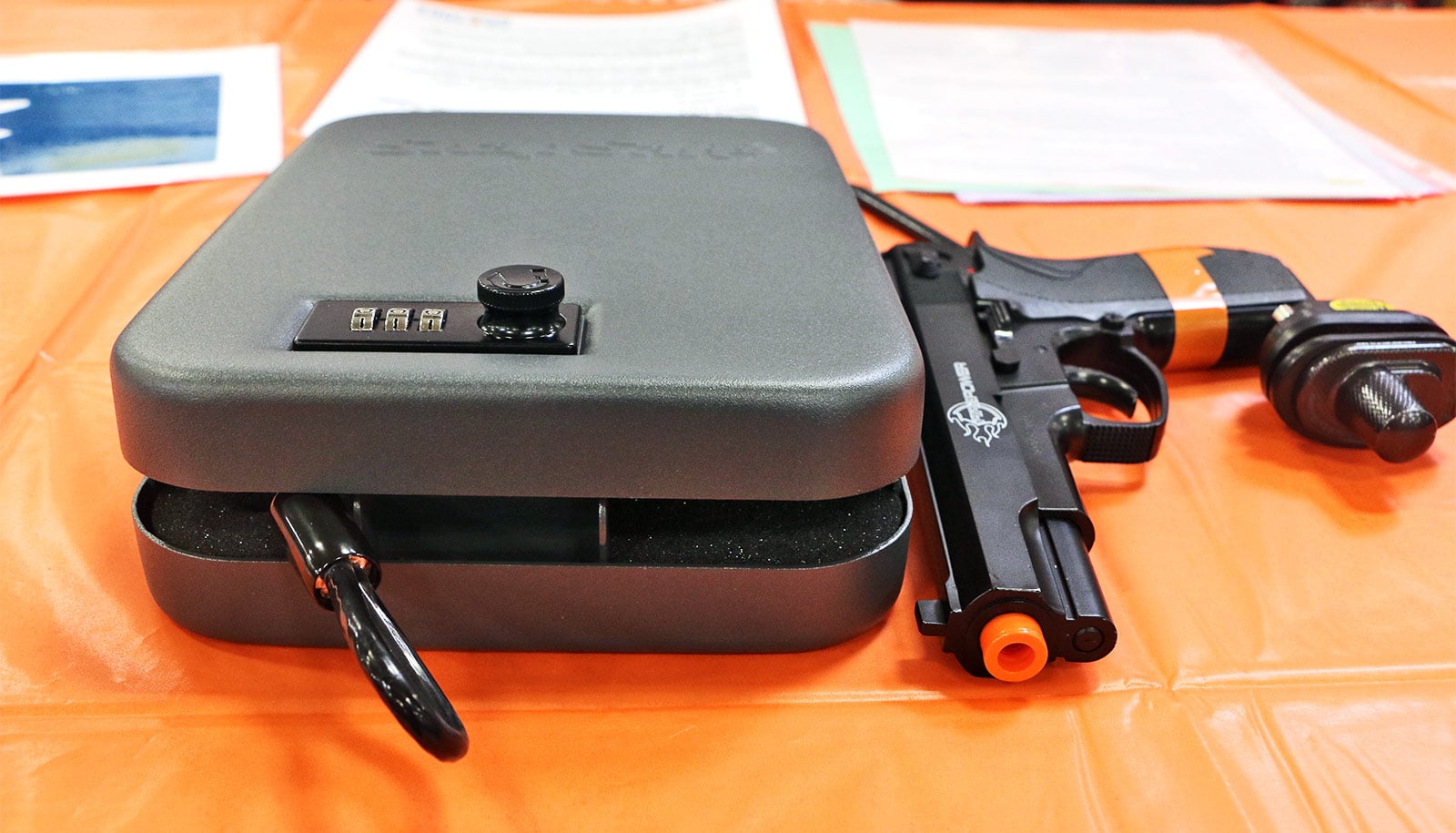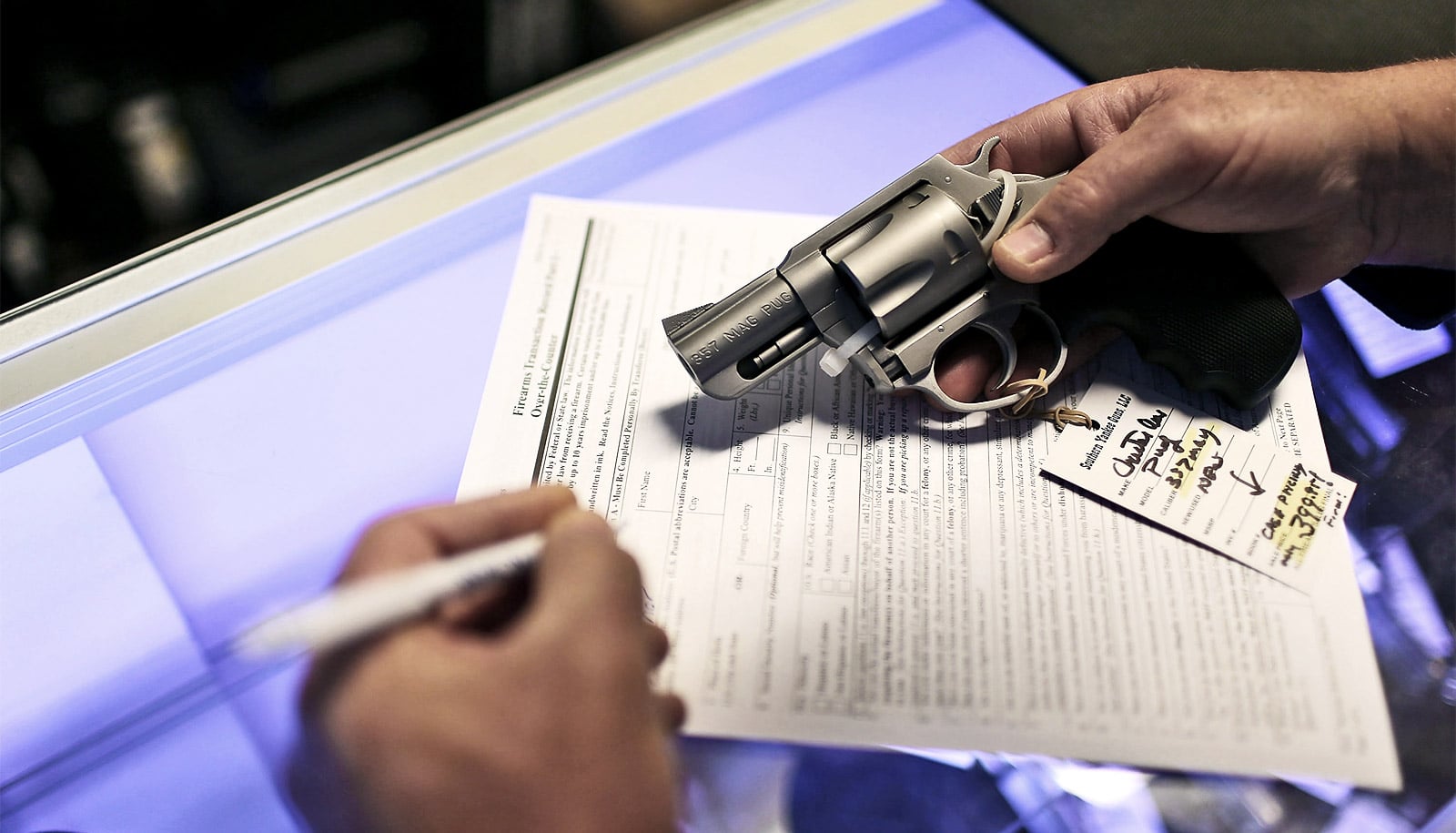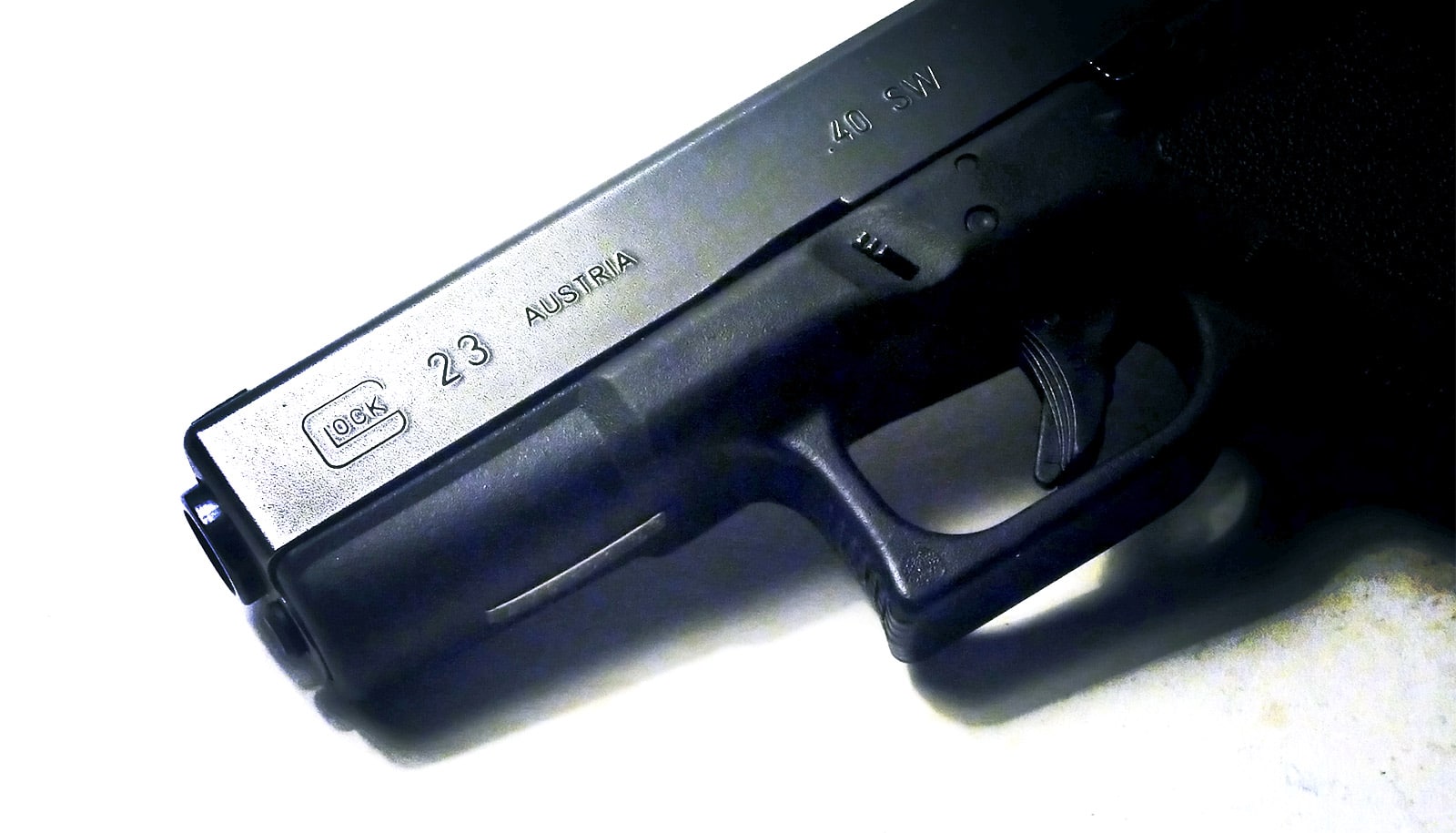A new survey reveals that 40% of gun owners at gun safety events reported having at least one firearm in their home that they had not locked up.
Nearly 3,000 people filled out the one-page survey asking how they stored guns at home and other household information while waiting for free firearm storage devices at the events held in sporting goods stores across Washington.
What the participants reported emphasizes the need for these public events, researchers say. In addition to the respondents who reported having a firearm in the home they didn’t lock up, 39% of survey takers indicated they kept a loaded gun at home, and 14% stored all guns unlocked and loaded.

“Even in this population, which clearly had some interest in or awareness of firearm safety, there was a high prevalence of unlocked firearms,” says lead author Aisha King, who worked on the study while a graduate student at the University of Washington’s School of Public Health and as an intern with Harborview Injury Prevention & Research Center’s INSIGHTsummer research program.
Furthermore, results of surveys conducted at the events in 10 Washington cities between 2015 and 2018 determined that the presence of children in the home did not make a difference.
Seattle Children’s Hospital, in partnership with University of Washington Medicine’s Harborview Injury Prevention & Research Center, public health agencies, local hospitals in each city, community organizations, and Safe Kids coalitions put on the firearm safety events.
In addition to taking a survey and receiving a free firearm lockbox or trigger lock, people at the public events received training on safe firearm storage and proper use of storage devices. The events took place in Monroe, Tacoma, Kirkland, Wenatchee, Seattle, Lacy, Mount Vernon, Moses Lake, Silverdale, and Federal Way.
“The purpose of the events is to increase the use of safe firearm storage, an evidence-based strategy to reduce firearm related injuries and deaths,” says coauthor Elizabeth Bennett, director of community health and engagement at Seattle Children’s. “Our goal is to create a comfortable environment to learn about locking up firearms and to have the devices ready to use right away.”
Public gun safety events are an effective tool for improving the safety of kids living around firearms, a previous study found, and the events reach a key audience: male gun owners.

This is an important demographic to reach, King says, because men make up the majority of gun owners and typically take responsibility for how guns are stored in the home. When gun safety interventions are held in pediatrician offices or similar clinic settings, most parents or guardians who attend are female.
Importantly, nearly all of the roughly 3,000 who submitted surveys says they planned to use the free safety device within the following week. Storing firearms locked and unloaded, the researchers point out, is associated with a greater-than 70% reduction in risk of unintentional and self-inflicted firearm injuries among young people.
King, currently a project coordinator at Columbia University, adds that when it comes to firearm storage some adults might think that younger children don’t know where the guns are or don’t know how to access them, but that is not always the case.
“A lot of times, the kids do know,” King says. “Also, guardians might think that training adolescents or older children is enough to keep them safe, that training means they don’t have to lock their guns. Unfortunately, a lot of adolescents are at high risk of suicide, and unlocked guns add to that risk—regardless of training.”
The study appears in Preventative Medicine.
Additional coauthors are from the University of Washington; the University of Colorado School of Medicine; the Veterans Health Administration, Colorado; and Seattle Children’s Hospital.
Source: Jake Ellison for University of Washington



